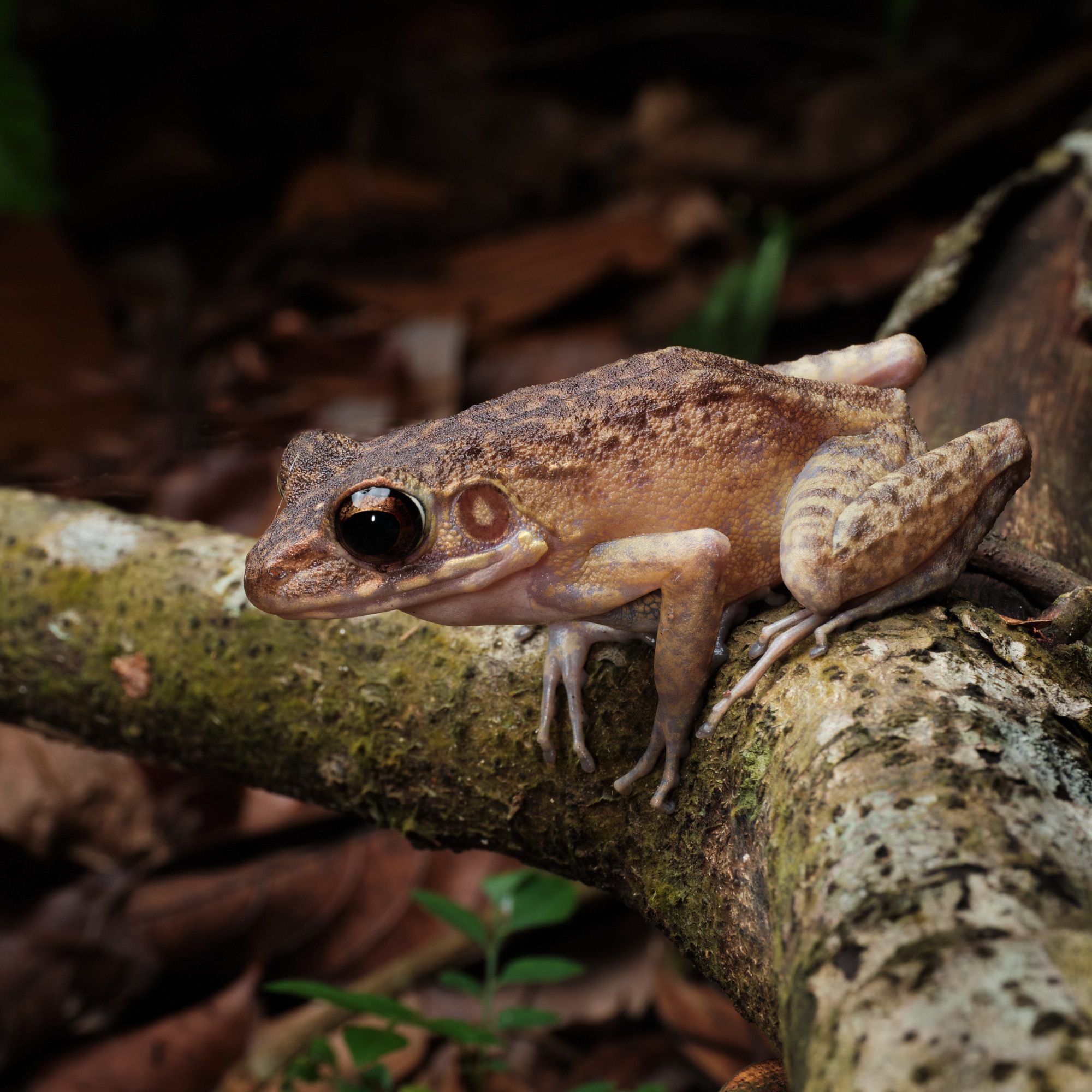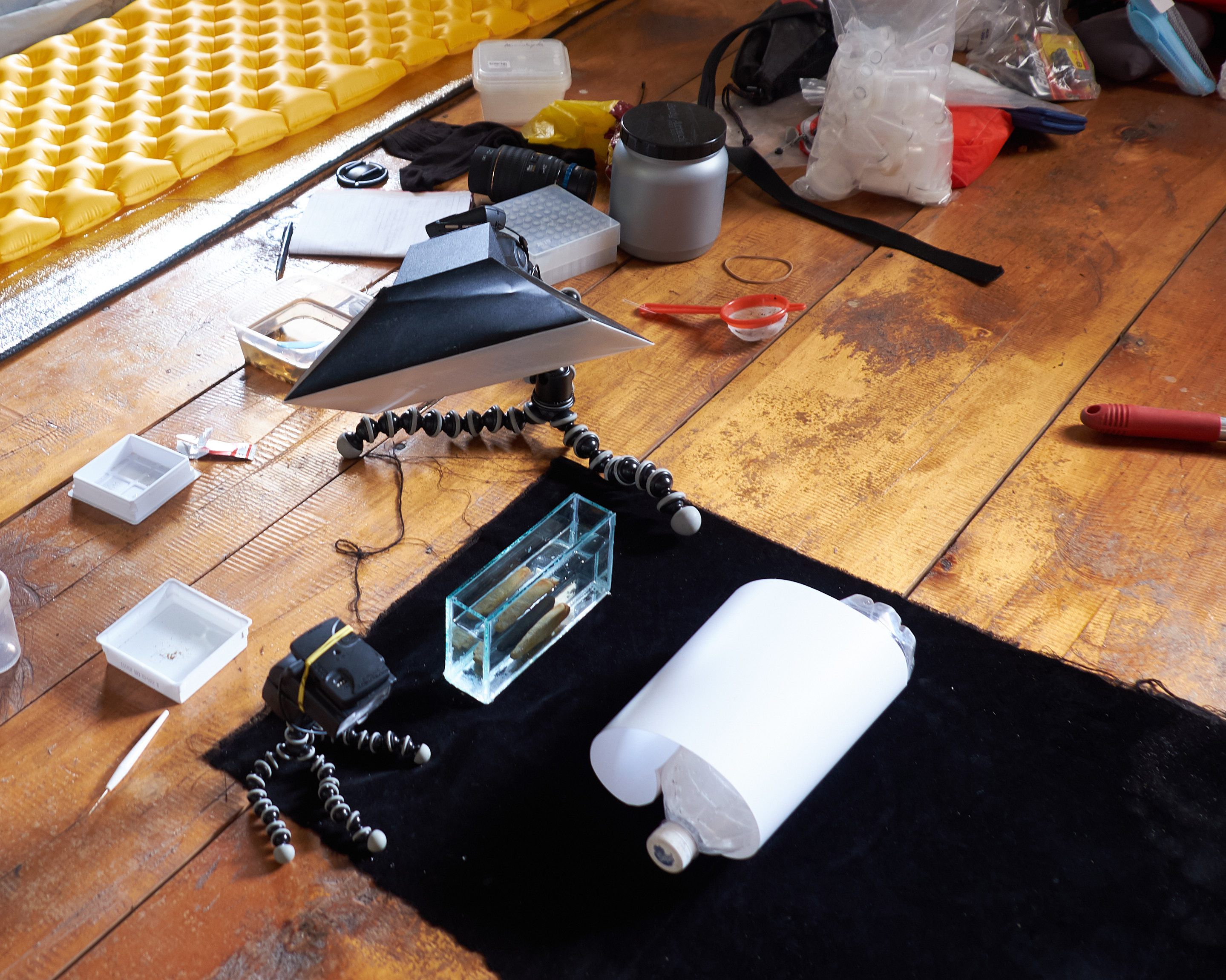On photos
We have thousands of images in our databases, covering frogs, tadpoles, and habitats from Borneo. Most of the photos are from our own group, but several individuals kindly provided additional photographic material, either because they can contribute rare photos or have excellent photographic skills. We acknowledge those friends and supporters on the pages where their photos appear. The copyrights of images contributed by others are sometimes indicated by watermarks.
Less is more! For this web site we try to select high quality photos or photos that show a specific feature useful for identification. A good photo in this sense is not necessarily beautiful or technically impeccable. Sometimes, however, we have to take just what is available, for example, in rare species.
Please respect copyrights and the Creative Commons license of this website.
Some notes on tadpole photography
Over the past few decades, the advent and rapid development of digital photography have profoundly changed our approach to image acquisition, processing, and archiving. For the first time, catalogs of vast numbers of high-quality images can be collected for biodiversity research projects at relatively low costs. Various software packages enable the handling and metadata annotation of image catalogs containing thousands of images, allowing for rapid comparisons of tadpoles among regions or study sites. Currently, Adobe Lightroom and Phase One Capture One are professional, though expensive, options.

Pulchrana baramica perching.
The resolution and quality of images have steadily increased, and any camera with a resolution of 16 megapixels (MP) or more will likely meet a biologist’s needs in most cases. Flash control systems have evolved substantially. Wireless-controlled flash systems or radio trigger systems are readily available for all platforms, making multiple flash setups easy to handle in field situations.

Improvised workplace for tadpole photography in a field situation.
In synchronized, wireless through-the-lens (TTL) systems from major camera manufacturers, lighting measurements and data exchanges between the flash and the camera are automatic. Images can be evaluated immediately after exposure on the camera screen, and lighting can be adjusted (e.g., exposure compensation) if necessary. In modern flash systems, little intervention by the photographer is generally needed, and the technique is simple and reliable.
Good lighting can be achieved by placing the main flash unit (wireless-controlled) on top of the aquarium and a second flash with slightly reduced power to the left of the camera to fill in shadows from an angle. Alternatively, two flashes—one on each side of the camera and pointed toward the subject—can be used effectively. Flashes can be mounted on small table tripods. Some experimentation may be necessary to find your preferred setup, depending on factors such as the color of the tadpole and the substratum, flash intensity, and the specific camera and lens used. Diffusers (light modifiers) mounted on the flash will help provide softer, less harsh lighting. An 80 × 80 cm piece of black velvet cloth placed under and behind the aquarium makes a good background and helps control light and reflections.
For tadpole photography, a custom-made mini-aquarium is useful—20 × 10 × 4 cm (width × height × depth) with 4 mm thick glass. A bottom layer of sand, pebbles, or small rocks can serve as a photo stage. The tadpole should be positioned close to the front glass. A thin straw may help gently guide the tadpole to the desired spot in the tank. Great care should be taken to keep the water as clean as possible to avoid floating particles, which become distracting in flash photography, especially against dark backgrounds. A leaf or plastic card inserted in front of the back glass can prevent reflections. Dorsal views are best obtained in a black or white plastic dish, preferably with a shallow rim. For smaller individuals, even the rear cap of a lens has proven suitable.
Tadpole photography requires a macro lens. Lenses with a focal length between 50 to 100 mm work well for tadpoles using APS-C sensor SLR cameras. For full-frame sensor cameras, 100 mm or more focal length are ideal. Longer focal lengths provide adequate distance between the front of the lens and the aquarium, allowing space for flashes or reflectors. Additional extension tubes can increase magnification beyond 1:1, making it possible to document fine pigmentation patterns or mouthpart details. Moreover, lenses in the 100–200 mm range reduce parallax effects, which is beneficial for minimizing refraction distortions, especially at the edges of the image.
Most of the tadpole photography presented on this website was taken without a scale in the image. However, if measurements are to be extracted from photographs, an appropriate scale should be placed near the tadpole—either inside or outside the tank. Some parallax error will need to be accounted for; therefore, longer focal length lenses tend to perform better for measurement purposes.
Tadpoles are always photographed facing left to show the position of the spiracle, which is located on the left side of the body in most species. Using different background colors can help ensure that the outline of the tail fin is clearly visible. When using a dark background, reflections of the tadpole may appear on the rear glass of the aquarium. This can be avoided by placing a non-reflective object (such as a colored plastic card, rock, or leaf) inside the tank behind the tadpole. Properly lit, standardized lateral, dorsal, and ventral digital photographs of tadpoles will accurately capture body shape, proportions, and pigmentation details in high quality. High-resolution digital images are an indispensable tool for tadpole identification. Large 16–50 MP images allow for cropping and detailed examination of features—such as silver and golden skin iridocytes—that are often lost in preserved museum specimens.